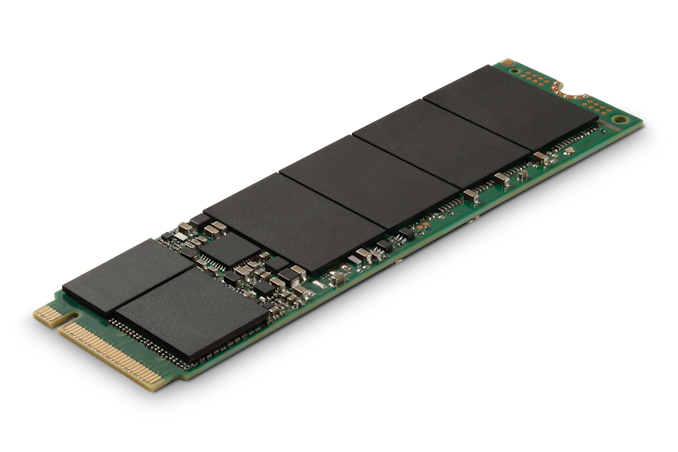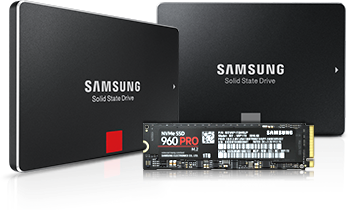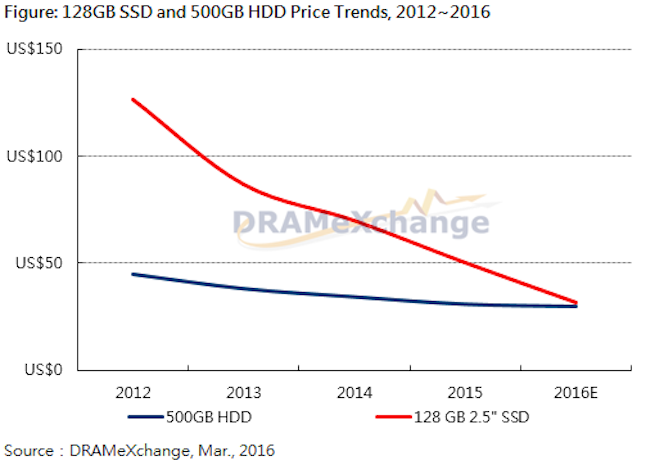The major difference between Solid-state drives (SSDs) and Hard disk drives (HDDs) is in the name, Solid-state. Because SSD’s have no moving components they are able both faster and more durable, especially when it comes to laptops. But how do they work?
For an SSD to function you need two types of components: memory chips and the flash controller to control these chips. These chips are called NAND flash memory and is a type of nonvolatile storage, implying that it does not require constant power to retain data.

Flash memories themselves are not a new technology, as a matter of fact, they were commercially available to the market as early as 1987. However, NAND flash memory chips were primarily found in USB sticks manufactured 2009 and beyond. It was not until 2013 that the flash memory became significantly cheaper and had then become the dominant memory type for SSD’s.
How do they stand up against magnetic storage?
Enough talk, how do these chips work and what is their superior side compared to HDDs.
SSD equipped with this kind of chip writes and reads data through electrical mechanisms, rather than by mechanical means such as the spinning disk in HDDs and its head that it uses to read the data of its magnetic storage media. However, while this can produce lower latency and higher read/write capacities it also has an ancillaries heal. The flash SSD can only sustain a limited number of cycles before they wear out.

This wear out can make it unsuitable to store mass data on, especially with frequient writes, however, with RAID technology the chance of data loss becomes very slim.
Some major improvements you will notice with a solid drive
SSD’s draw a lot less power due to its solid-state. And less power equals less heat. This can be a game-changer for data centers since they would not require to have as much cooling, in turn lowering the power consumption even more.
A major improvement over HDD’s is that it is much quieter. In an HDD you need to have a spinning disk to read and write data. The faster you want to write the faster the disk has to go. As you have probably noticed, fast-spinning fans can be very loud, and so can these magnetic disks be. Usually the disks spin at around 5600-7200 RPM, but can go up to 15k RPM in some enterprise rated HDD’s!
A crucial part of their success has been its long lifetime. Even though NAND flash memory, the same kind of memory also found in USB sticks, wears out and has a certain pre-set shelflife, it often lasts longer than your HDD counterpart. This is because there is a much higher chance of mechanical failiure rather than a solid piece of memory malfunctioning.
Another thing that you will notice is that the SSD is a lot quieter. This is because it is solid, with no moving parts, hence the name, solid. However, if you listen very closely you may notice some electrical noise. Still, this is nowhere near as loud as HDD’s are. The reason they are much louder is that they have moving parts, such as the spindle motor spinning the disk and the moving head. Sounds can be characterized as screeching when it is reading and writing data, especially on system boot.
A comparison between HDD and SSD
| Attribute | Solid State Drives (SSD’s) | Hard Disk Drives (HDD’s) |
| Performance | Up to 2500Mbit/s read/write | Only 150Mbit/sread/write. About 16xslower than an SSD |
| Power usage | Averages 2 W when active | Averages 6 W when active, about 3 times as much as SSD |
| Cost Per GB of storage | $0,1 per GB of storage | $0,037 per GB of storage , about 3,7 times cheaper than an SSD |
| Failure rate | Average of 1000TBW (terrabytes written) or 2 million hours | 1.5 million hours |
| Noice level | Very quiet. I can not hear any sound from it. | Noticable, about 20DB at 1 meters range |
| Heat output | Since SSD draws 3 times as little power its heat output should also be around 3 times as little | About 3 times more than your average SSD |
Addoption challanges
There are many different kind of Solid State drives but all of them face the same adoption problem – pricing. Small drives, such as 128GB and 256GB still are affordable, larger ones such as 1TB+ would set you back over $500.

As seen from the chart below we have been going in the right direction, but SSDs are still about 5 times as expensive as its counterpart.

What does the future hold?
If we look at HDD’s development during the past 5 years it has pretty much stood still, while the opposite has been true for SSD’s. This is soon to change though as Seagate recently announced that want to implement a newly discovered technology called HAMR(heat-assessed-magnetic-recording), which promises hard drives with the capacity up to 100TB by as early as 2025.
HAMR is a technology designed to enable the next big increase in the amount of data that can be stored on a hard drive. It uses a new kind of media magnetic technology on each disk that allows data bits, or grains, to become smaller and more densely packed than ever, while remaining magnetically stable.
— Seagate blog
This kind of precision, which enables packets of data to be stored tightly had previously not been achievable due to data inconsistency.
SSD’s, on the other hand, will continue to become increasingly faster as they have the past 5 years. However they will most likely never make HDD’s absolute since the price per GB is still an important factor for both consumers and enterprices.
 English
English
